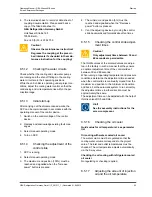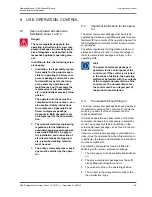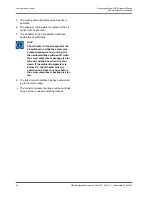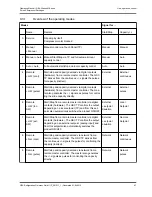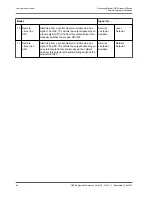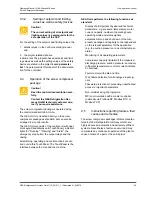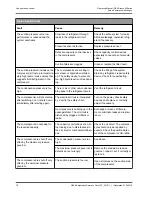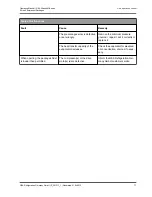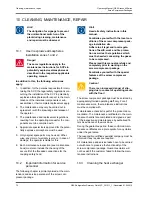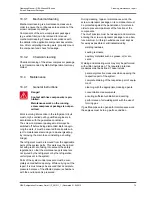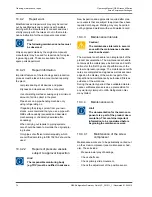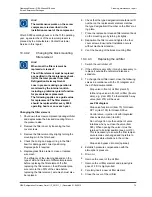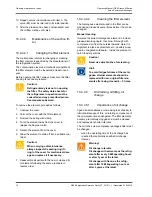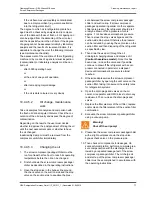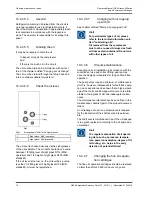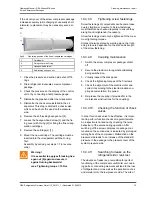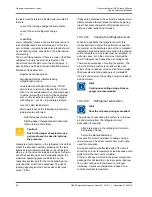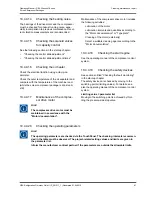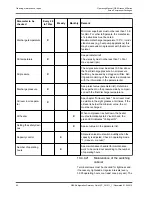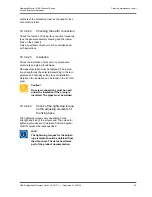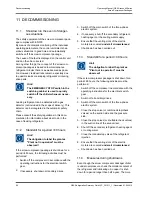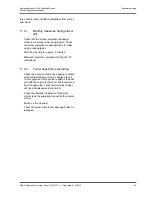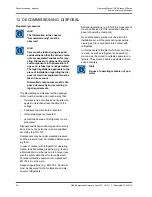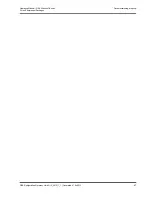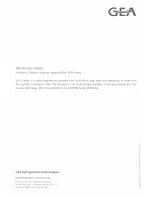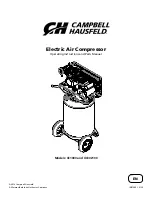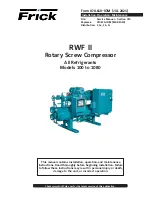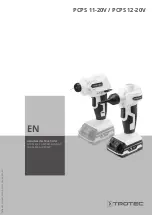
–
if the oil becomes unacceptably contaminated-
due to a major accident (e.g. water penetration
into the refrigerant circuit).
The degree to which oil in refrigeration plants has
aged must be checked by analysis and in compari-
son of the data with those of fresh oil. Oil ageing can
also be judged from the darkening of the oil colour
and the deposits found in the oil filters. If the degree
of ageing cannot be assessed reliably by laboratory
analysis and the results of visual examination, it is
advisable to change the oil at the following intervals
(see maintenance checklist).
The assessment of the condition of the refrigerating
machine oil by means of a general visual inspection
(contamination) or laboratory analysis must be car-
ried out:
–
after 5000 operating hours:
or
–
at the end of one year's operation
or
–
after remedying major damage.
or
–
if the oil is dark coloured or very cloudy.
10.4.4.5.2
Oil change, maintenance
work
Take oil samples for analysis and comparison with
the fresh oil data at regular intervals. Check the col-
ouration of the oil visually and assess the degree of
contamination.
Depending on the results, the user must decide
whether to approve the postponement of filling the oil
until the next assessment date or whether to have
the oil changed.
Inadmissibly damp oil must be removed from the
compressor unit/chiller immediately.
10.4.4.5.3
Changing the oil
1. The screw compressor package/chiller must be
run for at least half an hour to reach its operating
temperature before the oil can be changed.
2. First shut down the screw compressor package/
chiller as described in the operating instructions.
3. Open the stop valve in the bypass line around
the check valve on the suction side and the stop
valve on the suction side to equalise the pres-
sure between the screw compressor package/
chiller and suction line. If screw compressor
packages operated in parallel or other separate
chillers are present, the refrigerant should pref-
erably be drawn off at a pressure which is
approx. 1 to3 bar above atmospheric pressure.
Then re-close the stop valves bypass and the
suction-side stop valve. Otherwise the pressure
can be reduced by opening the vent valve on the
suction filter and then disposing of the refrigerant
as specified by law.
4. Then drain the used oil through the oil
draining/oil charging valves and dispose of it
(Caution! hazardous waste!).
Once this has
been done, re-close the valve and if possible
continue to draw off the refrigerant with a com-
pressor connected in parallel or a disposal
device until atmospheric pressure is almost
reached.
5. Otherwise depressurise the screw compressor
package/chiller by opening the vent valve on the
suction filter, taking into account the safety rules
for refrigeration systems.
6. Open the drain plugs and valves on the oil
cooler, oil separator and OMC block to drain any
residual oil. Then re-close the drain plugs and
valves.
7. Replace the filter element of the oil filter; replace
and/or clean the filter element of the suction filter
combination.
8. Evacuate the screw compressor package/chiller
using a vacuum pump.
Warning!
Shut off the oil pump!
9. Pressurise the screw compressor package/chiller
with a slight overpressure via the stop valve
bypass check valve on the pressure side.
10. Then check all components for leakages. On
successful completion, perform a complete pres-
sure compensation with the discharge line fol-
lowed by a repeated leakage test of the screw
compressor package/chiller. The oil charge oil
and start-up of the screw compressor package/
chiller must be accomplished in accordance with
the operating instructions.
Operating Manual | GEA Grasso M-Series
Screw Compressor Packages
Cleaning, maintenance, repair
GEA Refrigeration Germany GmbH | P_261511_1 | Generated 01.04.2015
77
Summary of Contents for Grasso M-Series
Page 88: ......

